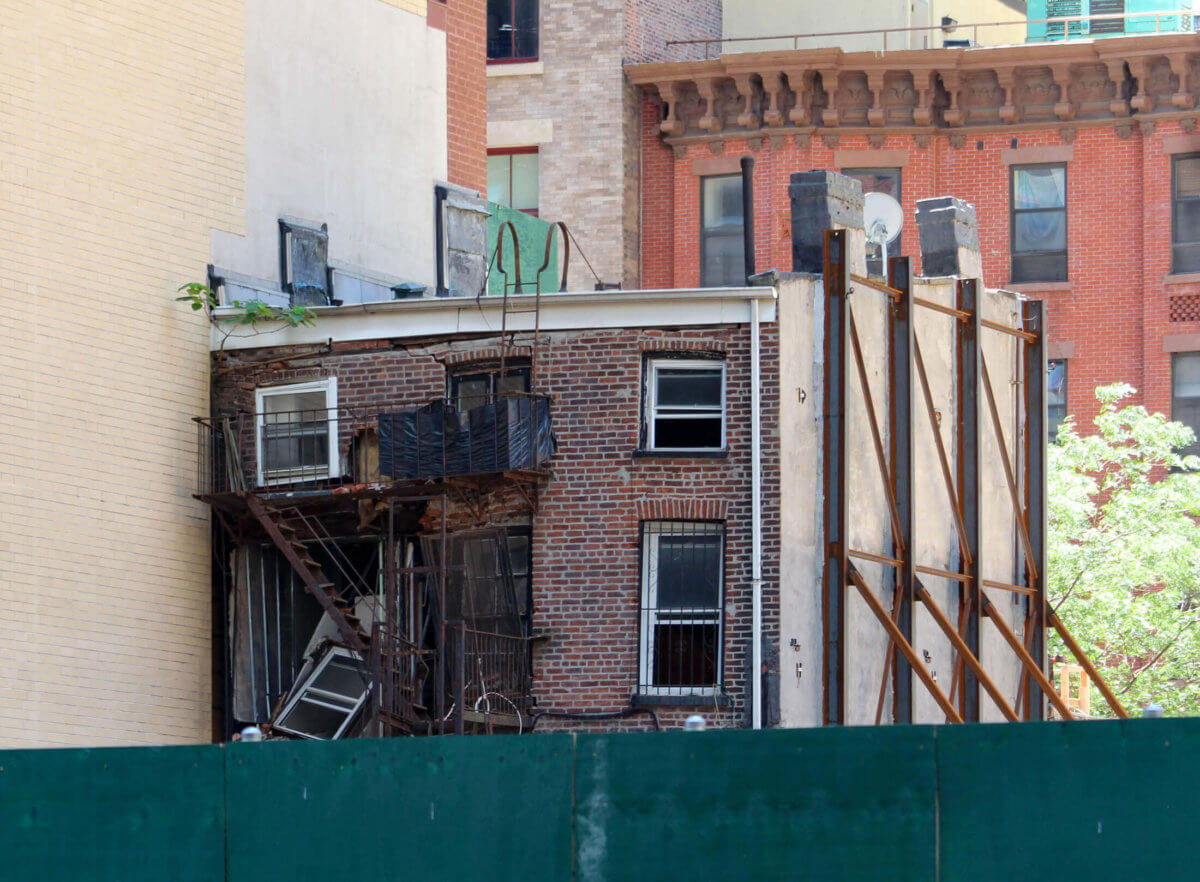Hell Gate: A Bright Passage
All residents of Queens tell fond stories of visiting Astoria Park, an oasis of green nestled squarely between two bridges. These bridges, Triborough (pictured) and Hell Gate, span a treacherous stretch of the East River for which the latter bridge is named–Hell Gate. A busy maritime industrial corridor in the 21st century, the efforts of engineers have rendered…

All residents of Queens tell fond stories of visiting Astoria Park, an oasis of green nestled squarely between two bridges. These bridges, Triborough (pictured) and Hell Gate, span a treacherous stretch of the East River for which the latter bridge is named–Hell Gate.
A busy maritime industrial corridor in the 21st century, the efforts of engineers have rendered Hell Gate tame and predictable, although one might still observe the occasional spiral eddy and acre wide pools of swirling water near the shorelines on a windy day. If one watches carefully, a variety of animals persist in this part of the river- diving cormorants are common, Birds of Prey are present as are riverine and littoral mammalia.
Every now and then, one might even encounter a U.F.O. (an Unidentified Floating Object).
Hell Gate got its name from the Dutch, who…
…christened the eddies and whirlpools of this widow making area “The Bright Passage,” – Hellegat in Dutch Hela’s Gate in Colonial English – or Hell Gate in modern parlance.
Over the centuries, Hell Gate lived up to its name, claiming hundreds of lives. The United States Army, and later the Army Corps of Engineers spent decades trying to make the passage safe.
A series of reefs and enormous alluvial boulders lined this particularly deep region of the East River, and there were depressions found in the bottom which formed enormous cauldron like formations which are commonly called “pots.” When the tidal current above passed over these pots, whirlpools and eddies formed on the surface which could easily run a ship aground or pull it under. During the 1850’s, an average of 1,000 ships a year were damaged or sunk at Hells Gate.
Supposedly, a British frigate full of gold which went down in 1779 is still down there, the HMS Hussar.
General John Newton of US Army Corps of Engineers was a bit of a genius, and in 1885 had his laborers dig mine shafts which tunneled 70 feet under the river and branched out in all directions. All told, there were four miles of tunnel when they were done. These shafts were laced with 300,000 pounds of high explosives.
On October 10, 1885- General Newton’s daughter Mary flipped a switch, and the largest manmade explosion in history (until the Hiroshima Bomb) was triggered. The target, a reef called “Flood Rock,” ceased to be. The explosion was felt in Princeton, New Jersey. This eliminated the hazardous conditions entirely, and Hell Gate became a proper and well used maritime channel, providing an interchange between the East and Harlem Rivers with Long Island Sound.
Believe it or not, there are photos of this which were shot as it happened- check this pdf out at the USACE site, and get the full story of the Corps efforts at Hell Gate as well.
Hell Gate and its bridges also play a somewhat larger role in history, here’s a bit of it.
The New York Connecting Railroad Bridge, aka the East River Arch Bridge- or commonly the Hell Gate Bridge- is estimated to be the most permanent of all the structures garlanding the Five Boroughs- according to Discover Magazine’s Feburary 2005 issue- it would take a millennium of environmental decay for Hell Gate to fail and collapse as compared to a mere 300 years for the other East River crossings.
A target of no small strategic importance during the second world war, Hell Gate was a mission objective for the Nazi saboteurs who were landed in Amagansett, Long Island by a Submarine (U-Boat 202– the Innsbruck) during the second World War’s Operation Pastorius.
The legal consequences of Pastorius are the precedent setting United States Supreme Court decision of Ex Parte Quinn.
Ex Parte Quinn is the legal pretext that underpins the detention of and trial by military tribunals of “foreign combatants” in the United States, a central tenet of our modern War on Terror.
Newtown Creek Alliance Historian Mitch Waxman lives in Astoria and blogs at Newtown Pentacle.









What's Your Take? Leave a Comment